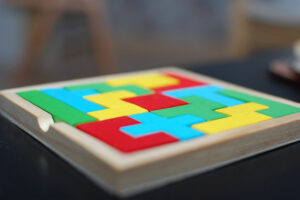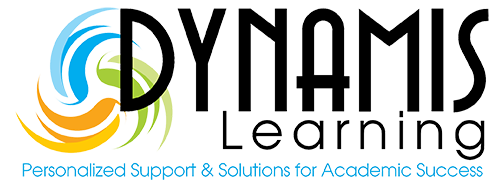 Recently I was invited to be a guest on Dynamis Learning’s Facebook Lunch and Learn Series to discuss the importance of critical-thinking for children as a precursor for creative-thinking. I opened with a story I’d read in Reader’s Digest magazine when I was a child. It’s an old story you may have heard before. It’s likely an urban legend, but it has realism which makes it a perfect introduction to the importance of critical thinking. Here’s how it goes:
Recently I was invited to be a guest on Dynamis Learning’s Facebook Lunch and Learn Series to discuss the importance of critical-thinking for children as a precursor for creative-thinking. I opened with a story I’d read in Reader’s Digest magazine when I was a child. It’s an old story you may have heard before. It’s likely an urban legend, but it has realism which makes it a perfect introduction to the importance of critical thinking. Here’s how it goes:
A newlywed husband observing his wife preparing a roast beef was shocked to see her slice an inch off the end of the meat and toss it in the trash. “Why did you do that?” he asked. She shrugged and replied, “I don’t know; it’s what my mother always did.” Baffled that anyone would waste good meat, and curious to learn the answer, he phoned his mother-in-law and put the question to her. Her response was the same as her daughter’s, “It’s the way my mother did it.” Knowing his wife’s grandmother was still alive, he phoned her next. Upon hearing the question, the older woman laughed, “Oh my, I don’t do that anymore. When I was younger and poorer, I only had one pan and a roast wouldn’t fit in it unless I cut the end off.”
At some point in our lives, all of us have heard these words, “That’s how we’ve always done it.” These six words are a tip-off that it’s time to reexamine a technique, a method, or a course of action, and the motivation behind it.
Today’s Kids Are Exposed to Massive Amounts of Media
 Critical-thinking is vitally important for kids because it is all about analyzing and evaluating information for truth and value. Second only to reading comprehension (95% of the information people acquire is through reading), critical-thinking is the most important skill your child can learn. It will improve their academic performance; enable them to make better decisions, and best of all it will help your child form opinions and ideas!
Critical-thinking is vitally important for kids because it is all about analyzing and evaluating information for truth and value. Second only to reading comprehension (95% of the information people acquire is through reading), critical-thinking is the most important skill your child can learn. It will improve their academic performance; enable them to make better decisions, and best of all it will help your child form opinions and ideas!
Critical-thinking skills teach your children how to think. It will help them to develop reasoning ability which will empower them to understand how things work and how to cope with the real world.
Critical-thinking can also rely on common sense which is the experiential knowledge that is shared by most people. It teaches children how to understand the differences between good and bad and right and wrong; in other words, they learn good judgment skills. They won’t just accept what they are told without consideration, and it will make them less vulnerable to peer pressure. As your children develop and refine this skill, it will also boost their self-confidence.
Asking Questions Leads to Creative-Thinking
 The problem-solving skills that critical-thinking teaches will stimulate creative-thinking. The act of examining, analyzing, and evaluating data entails asking questions. Questions lead one to wonder why things are done in a certain way instead of another which is the beginning of innovation.
The problem-solving skills that critical-thinking teaches will stimulate creative-thinking. The act of examining, analyzing, and evaluating data entails asking questions. Questions lead one to wonder why things are done in a certain way instead of another which is the beginning of innovation.
It is important to ask the right questions. Some examples include: “Will you be more specific?” “Can you give me more details?” “Can you show me an example or give me a demonstration?” “How can I verify that?” “Why is this situation a problem?”
Encourage Your Kids to Ask Questions
Parents should encourage rather than discourage all those “why” questions that kids ask constantly; and then answer them fully. If you don’t know the answer, say so, and then look up the answer together which will teach them valuable research skills. When you tell children that they need to obey some rule, you should also explain to them the reasons why – so that they understand it – and just don’t learn to  obey without question.
obey without question.
Techniques to Try with Your Kids
Parents, try any of these 6 techniques to help teach your children critical and creative thinking:
- Be a role model and do your critical thinking out loud so that your kids can see how you go about making decisions, forming opinions, and developing ideas.
- Encourage curiosity such as asking, “I wonder what will happen if I: do this; combine these; mix those; add this; subtract that; or divide these other things?”
- Solve riddles to exercise critical and creative-thinking. Riddles are not only fun, but they stimulate your creativity by forcing you to consider the clues from a perspective that is different than normal (riddles, like jokes, often use double meaning). Here are two that I found on riddles.com:
“What relation would your father’s sister’s sister-in-law be to you?”
“What ends in a ‘W’ but has no end?”
(* answers at end of article).
 Encourage them to use their imagination.
Encourage them to use their imagination.
- Turn off all media and just daydream. For example, ask them “Where in the world would you like to go on vacation?” Then ask, “Why there?” and “What would you do there?” Another one to ask is “If you could build anything, what would it be?”
- Look for connections and patterns. This is done habitually by innovators because it gives them ideas for new money-making inventions. For example: Pick a random object. Then ask your child to come up with a new use for it other than what it was intended for.
- A fun way to begin this habit is by cloud-watching and looking to find recognizable shapes.
- Allow your kids to come up with their own unique recipes: toppings for pizza or breakfast cereal; or making sandwiches (peanut butter and… banana… pickles… ham… etc.).
- Give them an easy problem to solve and ask them to come up with three or more solutions. For example: “What would you put on a T-shirt that tells who you are or what you believe?”
When you teach your children to think critically and creatively you will be giving them the tools to live a more successful and safer life.
* Riddle answers: your mother; a rainbow.
About the Author: Robert Evans Wilson, Jr. is a personal empowerment author and speaker. He works with companies that want to be more competitive and with people who want to get more out of life via creative-thinking, critical-thinking, as well as the ability to deal with change and fear. Rob is the author of …and Never Coming Back, a psychological mystery-novel about a motion picture director; The Annoying Ghost Kid, a humorous children’s book about dealing with a bully; and the inspirational book on self-motivation: Wisdom in the Weirdest Places. For more information on Rob, please visit www.RobWilsonSpeaker.com.

Recently I was invited to be a guest on Dynamis Learning’s Facebook Lunch and Learn Series to discuss the importance of critical-thinking for children as a precursor for creative-thinking. I opened with a story I’d read in Reader’s Digest magazine when I was a child. It’s an old story you may have heard before. It’s likely an urban legend, but it has realism which makes it a perfect introduction to the importance of critical thinking. Here’s how it goes:
A newlywed husband observing his wife preparing a roast beef was shocked to see her slice an inch off the end of the meat and toss it in the trash. “Why did you do that?” he asked. She shrugged and replied, “I don’t know; it’s what my mother always did.” Baffled that anyone would waste good meat, and curious to learn the answer, he phoned his mother-in-law and put the question to her. Her response was the same as her daughter’s, “It’s the way my mother did it.” Knowing his wife’s grandmother was still alive, he phoned her next. Upon hearing the question, the older woman laughed, “Oh my, I don’t do that anymore. When I was younger and poorer, I only had one pan and a roast wouldn’t fit in it unless I cut the end off.”
At some point in our lives, all of us have heard these words, “That’s how we’ve always done it.” These six words are a tip-off that it’s time to reexamine a technique, a method, or a course of action, and the motivation behind it.

Today’s Kids Are Exposed to Massive Amounts of Media
Critical-thinking is vitally important for kids because it is all about analyzing and evaluating information for truth and value. Second only to reading comprehension (95% of the information people acquire is through reading), critical-thinking is the most important skill your child can learn. It will improve their academic performance; enable them to make better decisions, and best of all it will help your child form opinions and ideas!
Critical-thinking skills teach your children how to think. It will help them to develop reasoning ability which will empower them to understand how things work and how to cope with the real world.
Critical-thinking can also rely on common sense which is the experiential knowledge that is shared by most people. It teaches children how to understand the differences between good and bad and right and wrong; in other words, they learn good judgment skills. They won’t just accept what they are told without consideration, and it will make them less vulnerable to peer pressure. As your children develop and refine this skill, it will also boost their self-confidence.

Asking Questions Leads to Creative-Thinking
The problem-solving skills that critical-thinking teaches will stimulate creative-thinking. The act of examining, analyzing, and evaluating data entails asking questions. Questions lead one to wonder why things are done in a certain way instead of another which is the beginning of innovation.
It is important to ask the right questions. Some examples include: “Will you be more specific?” “Can you give me more details?” “Can you show me an example or give me a demonstration?” “How can I verify that?” “Why is this situation a problem?”
Encourage Your Kids to Ask Questions
Parents should encourage rather than discourage all those “why” questions that kids ask constantly; and then answer them fully. If you don’t know the answer, say so, and then look up the answer together which will teach them valuable research skills. When you tell children that they need to obey some rule, you should also explain to them the reasons why – so that they understand it – and just don’t learn to obey without question.

Techniques to Try with Your Kids
Parents, try any of these 6 techniques to help teach your children critical and creative thinking:
- Be a role model and do your critical thinking out loud so that your kids can see how you go about making decisions, forming opinions, and developing ideas.
- Encourage curiosity such as asking, “I wonder what will happen if I: do this; combine these; mix those; add this; subtract that; or divide these other things?”
- Solve riddles to exercise critical and creative-thinking. Riddles are not only fun, but they stimulate your creativity by forcing you to consider the clues from a perspective that is different than normal (riddles, like jokes, often use double meaning). Here are two that I found on riddles.com:
“What relation would your father’s sister’s sister-in-law be to you?”
“What ends in a ‘W’ but has no end?”
(* answers at end of article).

- Encourage them to use their imagination.
- Turn off all media and just daydream. For example, ask them “Where in the world would you like to go on vacation?” Then ask, “Why there?” and “What would you do there?” Another one to ask is “If you could build anything, what would it be?”
- Look for connections and patterns. This is done habitually by innovators because it gives them ideas for new money-making inventions. For example: Pick a random object. Then ask your child to come up with a new use for it other than what it was intended for.
- A fun way to begin this habit is by cloud-watching and looking to find recognizable shapes.
- Allow your kids to come up with their own unique recipes: toppings for pizza or breakfast cereal; or making sandwiches (peanut butter and… banana… pickles… ham… etc.).
- Give them an easy problem to solve and ask them to come up with three or more solutions. For example: “What would you put on a T-shirt that tells who you are or what you believe?”
When you teach your children to think critically and creatively you will be giving them the tools to live a more successful and safer life.
* Riddle answers: your mother; a rainbow.
About the Author: Robert Evans Wilson, Jr. is a personal empowerment author and speaker. He works with companies that want to be more competitive and with people who want to get more out of life via creative-thinking, critical-thinking, as well as the ability to deal with change and fear. Rob is the author of …and Never Coming Back, a psychological mystery-novel about a motion picture director; The Annoying Ghost Kid, a humorous children’s book about dealing with a bully; and the inspirational book on self-motivation: Wisdom in the Weirdest Places. For more information on Rob, please visit www.RobWilsonSpeaker.com.
